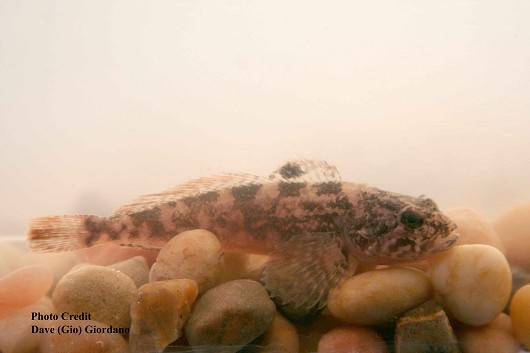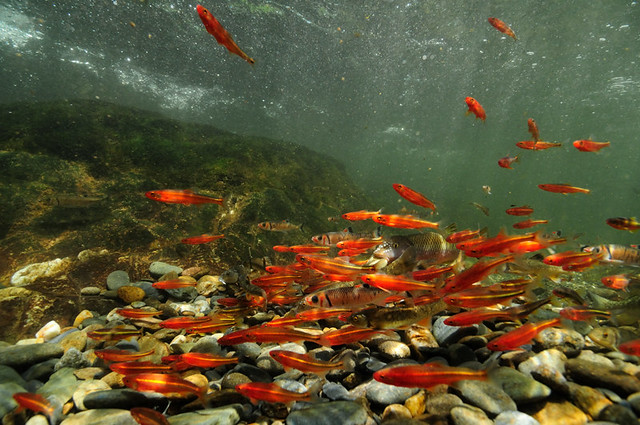World Water Day is March 22 - Your Drop Matters
By Dr. Anna George, Director of the Tennessee Aquarium Conservation Institute
Nearly 70 percent of our blue planet is covered with water, yet only 2.5 percent of that is fresh water. Most of that fresh water, nearly two-thirds, is bound up in glaciers and ice caps, and another 30 percent remains hidden as groundwater. A mere 1/100th of a percent of the world’s water remains on the surface as rivers and lakes. To put that in perspective, imagine being restricted to 7 teaspoons of water per day, which is 1/100th of a percent of the 100 gallons used daily by the average American.
We complicate this tricky situation by often contaminating the scant fresh water we can use. While most people think of pollution as industrial waste, the Clean Water Act has regulated this problem effectively. Instead, the most common pollution in our rivers now comes from our everyday activities.
Every time it rains, the water that falls on the ground picks up whatever it encounters as it makes its way through the watershed back to streams and rivers. In a landscape covered with healthy vegetation, water moves slowly across the surface, naturally filtered by the plant roots underground. But when the land is cleared of vegetation or paved, water carries with it loose dirt and everything else it encounters. When we add extra fertilizer to make our lawns green, or we position our gutters to send rainwater cascading down our driveway, water can pick up plenty of harmful substances. This nonpoint source pollution across our watershed is jeopardizing our freshwater systems. Thus, the drops of water that fall on a watershed carry a measure of the health of the land with them to the river.
Because nonpoint source pollution is so diffuse and widespread, there isn’t a simple answer or government regulation that will easily address what we need to do differently. Our river systems are the arteries that pulse with life across our landscape, and they are having heart attacks. We see the symptoms such as the drinking water crisis in Flint, Michigan, or that the extinction rates for freshwater animals remain much higher than what we see for land or marine animals. Like a patient recovering from a heart attack, we need a lifestyle change for fresh water. The specific changes you make may be different than anyone else’s, and they may seem small at first. But like our rivers rise from all the drops of water that have fallen in a rainstorm, together, our actions add up to something much bigger.
Discover Your Connection. Maybe your journey begins with noticing the water around you, like when you move to the right lane of the highway on bridges just so you can see what the river looks like today. Find out what watershed you’re in, including what cities upstream use the same water source and where water goes when it leaves your community. Learn the names of five different animals that live in a river near you. This will be easy if you’re in the southeastern United States, because we have an underwater rainforest in our rivers and streams— more freshwater biodiversity than almost anywhere else in the world.
Reduce Your Impact. These actions may start small—turn off the water when you brush your teeth. Bring a water bottle everywhere so you can refill it instead of buying it. Install a rain barrel to catch and reuse the water running off from your roof. Shop at a farmers’ market so you can ask the farmers how they use fertilizer. Take your old medicines back to pharmacies and police stations for disposal rather than flush them down the toilet into. You’ll help to improve the health of your watershed, which is greatly needed in places like the eastern U.S. where 80% of streams are rated in poor or fair biological condition.
Offer to Help. Our drops begin to build into a bigger river when we work together. Share information with friends and neighbors. Join your local watershed group. Write letters to your government representatives to let them know this is an issue you care about. For too long, we’ve viewed conservation as something that happens where humans aren’t, such as the scenic vistas captured in an Ansel Adams photograph. Instead, we need conservation to happen where we are - in our communities where we can join together for a bigger impact.
Play and Enjoy. Finally, one of the best things we can do for ourselves and our natural environment is simply spending time outside appreciating what we have. The—incredible natural treasures we have make the world a little more colorful, a little more beautiful, and a little more magical. Being in a beautiful river full of life matters as much to our health as it does to a turtle’s.
Fresh water magnifies our impacts, whether for good and bad. Consider your impact and make your drop magnify something good. Make your drop matter.










.jpg)














